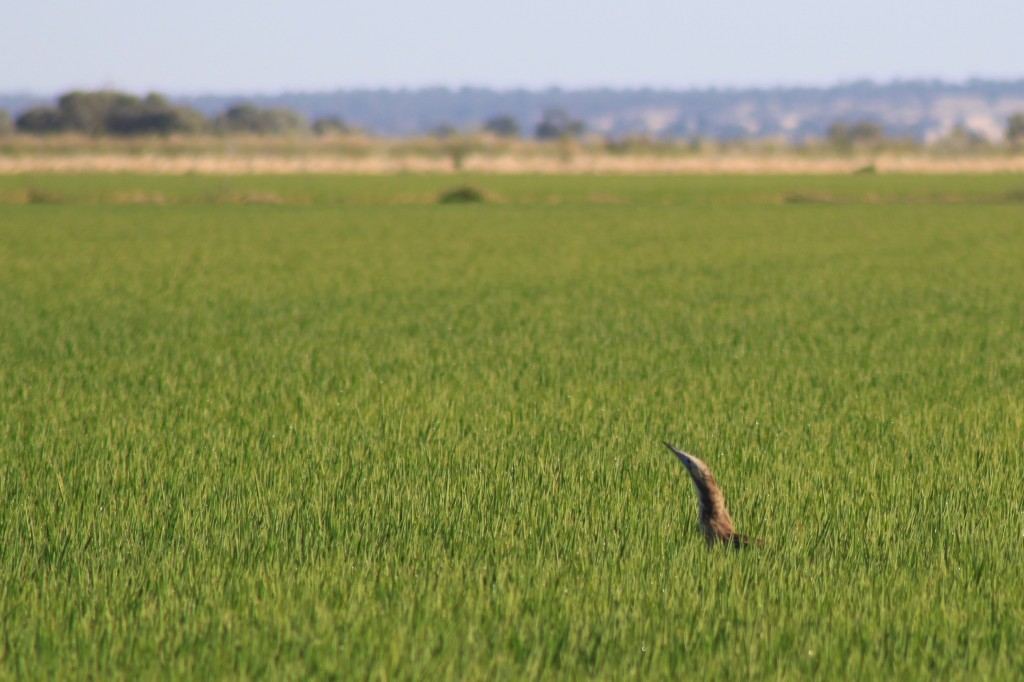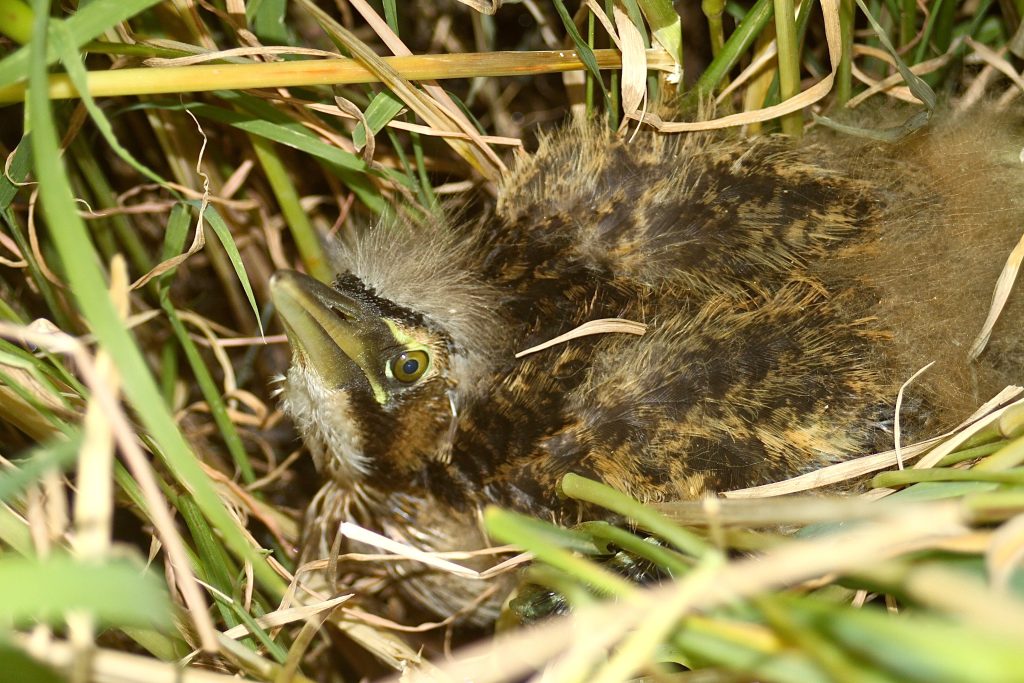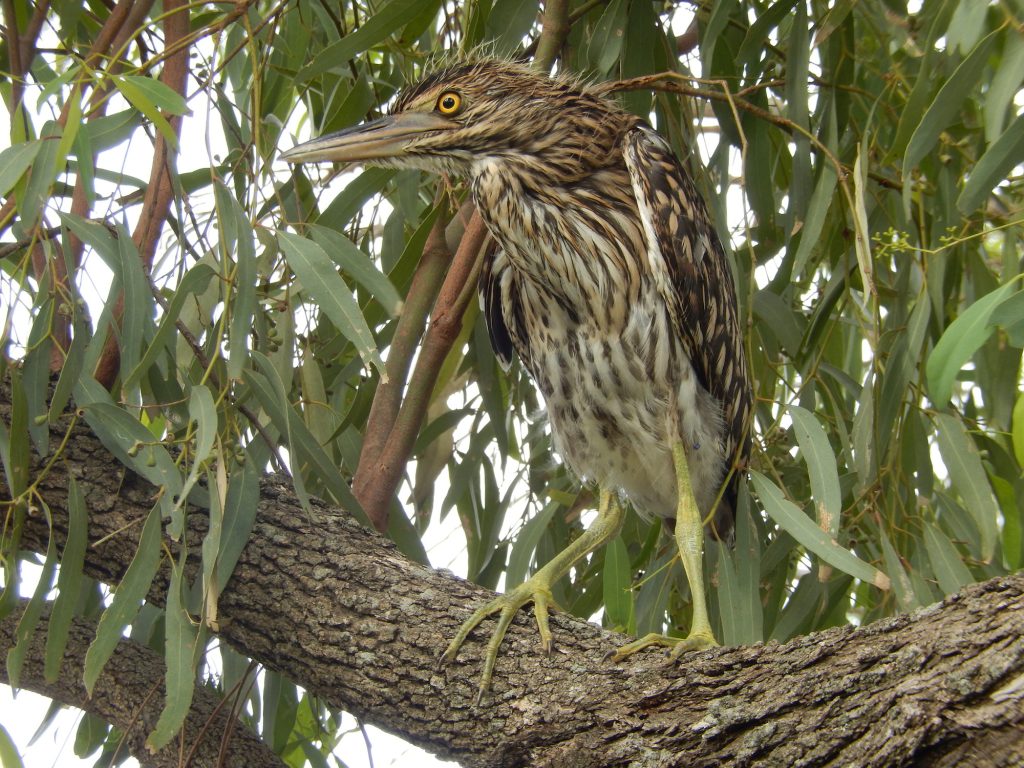 The Australasian Bittern is a rarely seen, poorly known and globally endangered waterbird.
The Australasian Bittern is a rarely seen, poorly known and globally endangered waterbird.
Australasian Bittern (Botaurus poiciloptilus): also known as Bunyip Bird, Brown Bittern or Bull Bird.
Conservation Status: Globally Endangered (IUCN); Nationally Endangered (EPBC).
Distribution & Abundance: A total of approximately 1000-2499 mature individuals remain in Australia, New Zealand and possibly still New Caledonia. The areas with the largest populations are south-eastern Australia and New Zealand, while small numbers persist in south-western Australia, south-eastern QLD and Tasmania.
Size & Weight: With neck stretched, can stand just over 1 metre tall. Body length: 66 –76 cm. Weight: females 571- 1135 g; males 875 –2085 g. Wingspan of 1050–1180 cm.
Identification: These bitterns do not roost in trees and only rarely occur in loose flocks of more than five. Smaller, tree-roosting Nankeen Night-herons (see photograph at bottom of this page), which often occur in flocks, are commonly mistaken for Australasian Bitterns. Along the NSW coast, also check Black Bittern. Birdlife Australia has produced an Australasian Bittern identification guide.
Call: Males make deep booms during breeding season, audible for about 2 kms. These booms were a key source of legends of Australia’s mythical Bunyip. Press play to hear the sounds of a Coleambally rice field in January 2016, including booming male bitterns and growling Southern Bell Frogs.
Habitat: Vegetated wetlands. Often seen feeding in more open areas in water up to 30 cm deep, but rely on the dense cover of reeds, rushes, sedges, rice and other water plants to roost and breed in. Cumbungi (Bullrush, Typha), Phragmites and Canegrass wetlands are important in NSW Riverina.
Diet: Fish, frogs, yabbies, mice, insects.
Breeding: Poorly known. Usually four or five eggs in well-hidden platform nest about 10-30 cm above water level. Incubation approx. 23 days; a further 7 weeks until chicks fledge but leave nest after about two weeks. Appears that only female incubates and raises young. Polygyny (male with multiple females) highly likely, including recent observations (Jan. 2015) of single booming male with three nests/females in single rice paddock near Griffith, NSW.
Movements: Poorly known. Responds to flooding of ephemeral inland wetlands, presumably sometimes from coastal refuges. Recent satellite tracking work indicates that a large portion of the Riverina rice crop breeding population disperses to coastal wetlands after harvest, while others stay local.
Closest Relative: Eurasian Bittern (Botaurus stellaris), while there are two other species in the Botaurus group; the American Bittern (Botaurus lentiginosus) and Pinnated Bittern (Botaurus pinnatus).
For more detailed general information about the Australasian Bittern, see the International Heron Conservation Page and the Australian Government’s Australasian Bittern Page.

